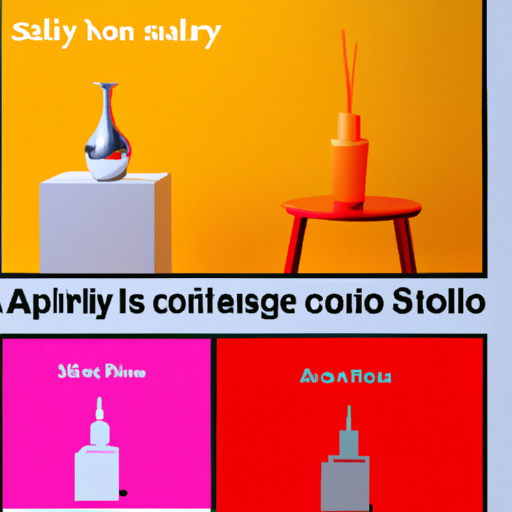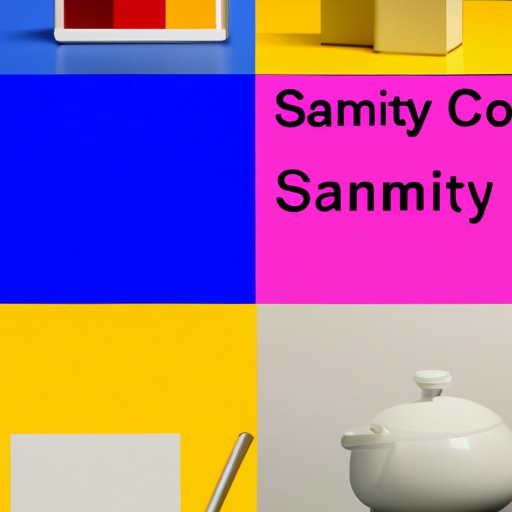
-
Table of Contents
- Creating Whitespace-Driven Designs: Simplicity and Elegance
- The Power of Whitespace
- Benefits of Whitespace-Driven Designs
- Examples of Whitespace-Driven Designs
- Apple
- Medium
- Case Studies on Whitespace-Driven Designs
- Dropbox
- Basecamp
- Best Practices for Creating Whitespace-Driven Designs
- Summary
Creating Whitespace-Driven Designs: Simplicity and Elegance

Whitespace, also known as negative space, is the empty space between elements in a design. It is a powerful tool that can greatly impact the overall look and feel of a design. When used effectively, whitespace can create a sense of simplicity, elegance, and clarity. In this article, we will explore the concept of whitespace-driven designs and how they can enhance user experience and engagement.
The Power of Whitespace
Whitespace is not just empty space; it is an essential element of design. It allows the content and other design elements to breathe, providing visual relief and improving readability. Whitespace helps to guide the user’s attention, making it easier to navigate through the design and understand the information presented.
Whitespace can be categorized into two types: macro and micro. Macro whitespace refers to the space between major elements, such as sections or blocks of content. Micro whitespace, on the other hand, is the space between smaller elements, like paragraphs, images, or buttons. Both types of whitespace play a crucial role in creating a balanced and harmonious design.
Benefits of Whitespace-Driven Designs
Whitespace-driven designs offer several benefits that contribute to a positive user experience and overall design quality. Let’s explore some of these benefits:
- Improved Readability: Whitespace helps to separate different elements and improve legibility. By giving content room to breathe, it becomes easier for users to read and understand the information presented.
- Enhanced Focus: Whitespace allows designers to highlight important elements by giving them more space and reducing distractions. This helps to guide the user’s attention and improve the overall user experience.
- Increased Clarity: By eliminating clutter and unnecessary elements, whitespace creates a clean and organized design. This clarity makes it easier for users to navigate through the design and find the information they are looking for.
- Improved User Engagement: Whitespace can create a sense of elegance and sophistication, which can enhance the user’s perception of a brand or product. A well-designed whitespace-driven layout can make a design more visually appealing and encourage users to stay longer and engage with the content.
Examples of Whitespace-Driven Designs
Whitespace-driven designs can be found in various industries and mediums. Let’s take a look at some examples:
Apple
Apple is known for its minimalist and elegant designs, which heavily rely on whitespace. Their website and product packaging often feature large amounts of whitespace, creating a sense of simplicity and sophistication. This approach helps to highlight the products and key messages, making them more visually appealing and engaging for users.
Google’s search engine homepage is a prime example of a whitespace-driven design. The clean and minimalistic layout with ample whitespace allows users to focus on the search bar and the search results. By keeping the design simple and uncluttered, Google provides a seamless user experience that millions of people rely on every day.
Medium
Medium, a popular online publishing platform, utilizes whitespace to create a clean and immersive reading experience. The ample whitespace between paragraphs and around images helps to improve readability and keeps the focus on the content. This design choice enhances the user’s engagement with the articles and encourages them to spend more time reading.
Case Studies on Whitespace-Driven Designs
Several case studies have demonstrated the positive impact of whitespace-driven designs on user experience and business outcomes. Let’s explore a couple of these studies:
Dropbox
In a case study conducted by Dropbox, they found that simplifying their homepage design by incorporating more whitespace led to a 10% increase in sign-ups. By reducing clutter and focusing on the key message, Dropbox was able to create a more compelling and user-friendly design that resonated with their target audience.
Basecamp
Basecamp, a project management software company, redesigned their landing page to incorporate more whitespace and improve the overall user experience. The result was a 14% increase in conversions, demonstrating the power of whitespace in driving user engagement and action.
Best Practices for Creating Whitespace-Driven Designs
Now that we understand the benefits and impact of whitespace-driven designs, let’s explore some best practices for incorporating whitespace effectively:
- Start with a solid grid system: A grid system helps to establish a consistent layout and spacing. It provides a framework for organizing content and ensures that whitespace is used consistently throughout the design.
- Consider the content hierarchy: Whitespace can be used to emphasize important elements and create a clear content hierarchy. By giving more space to key messages or calls to action, designers can guide the user’s attention and improve the overall user experience.
- Don’t be afraid of large whitespace: Embracing large areas of whitespace can create a sense of elegance and sophistication. It can also make the design more visually appealing and improve readability. However, it’s important to strike a balance and not overuse whitespace, as it can make the design feel empty or unfinished.
- Test and iterate: As with any design approach, it’s important to test and iterate to find the optimal balance of whitespace for your specific audience and goals. Conduct user testing and gather feedback to make informed decisions and continuously improve the design.
Summary
Whitespace-driven designs offer numerous benefits, including improved readability, enhanced focus, increased clarity, and improved user engagement. By incorporating whitespace effectively, designers can create elegant and visually appealing designs that provide a seamless user experience. Examples from companies like Apple, Google, and Medium demonstrate the power of whitespace in creating compelling designs. Case studies from Dropbox and Basecamp further highlight the positive impact of whitespace on user engagement and business outcomes. By following best practices and continuously iterating, designers can harness the power of whitespace to create designs that are both simple and elegant.
